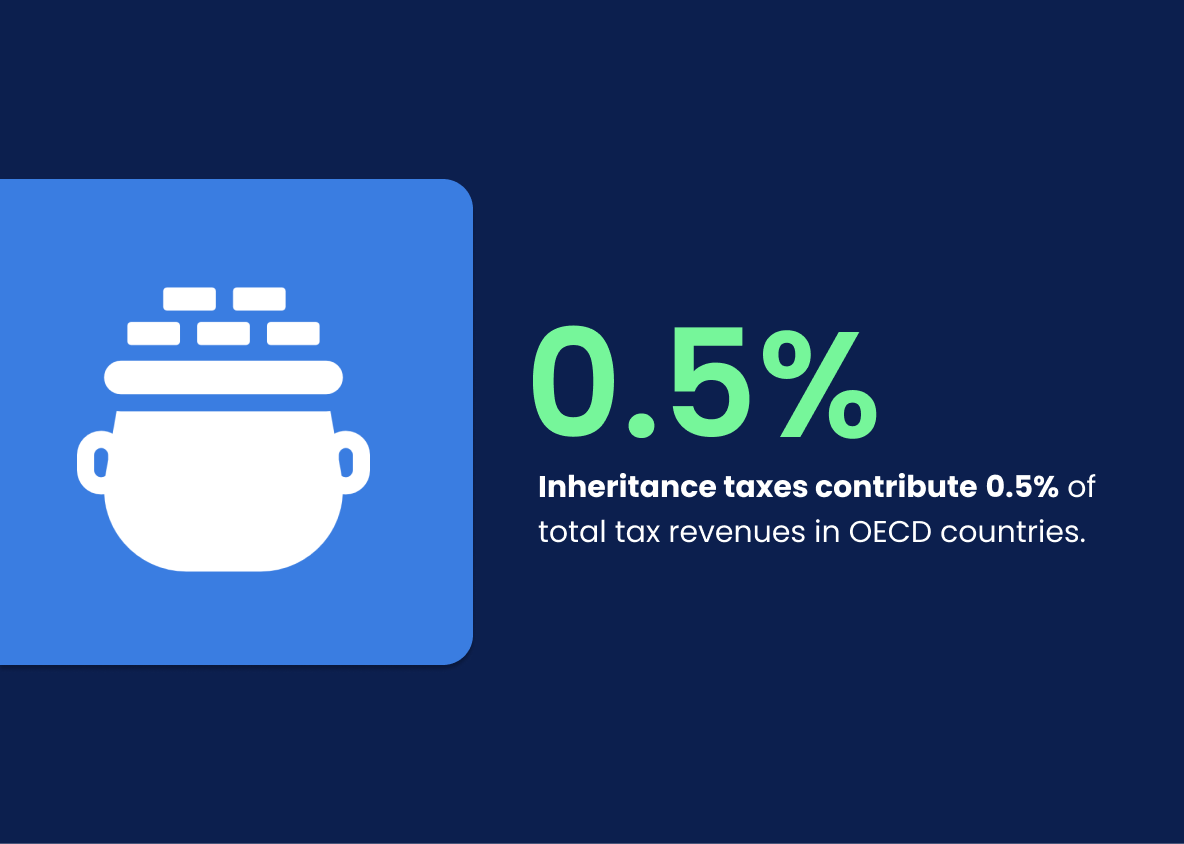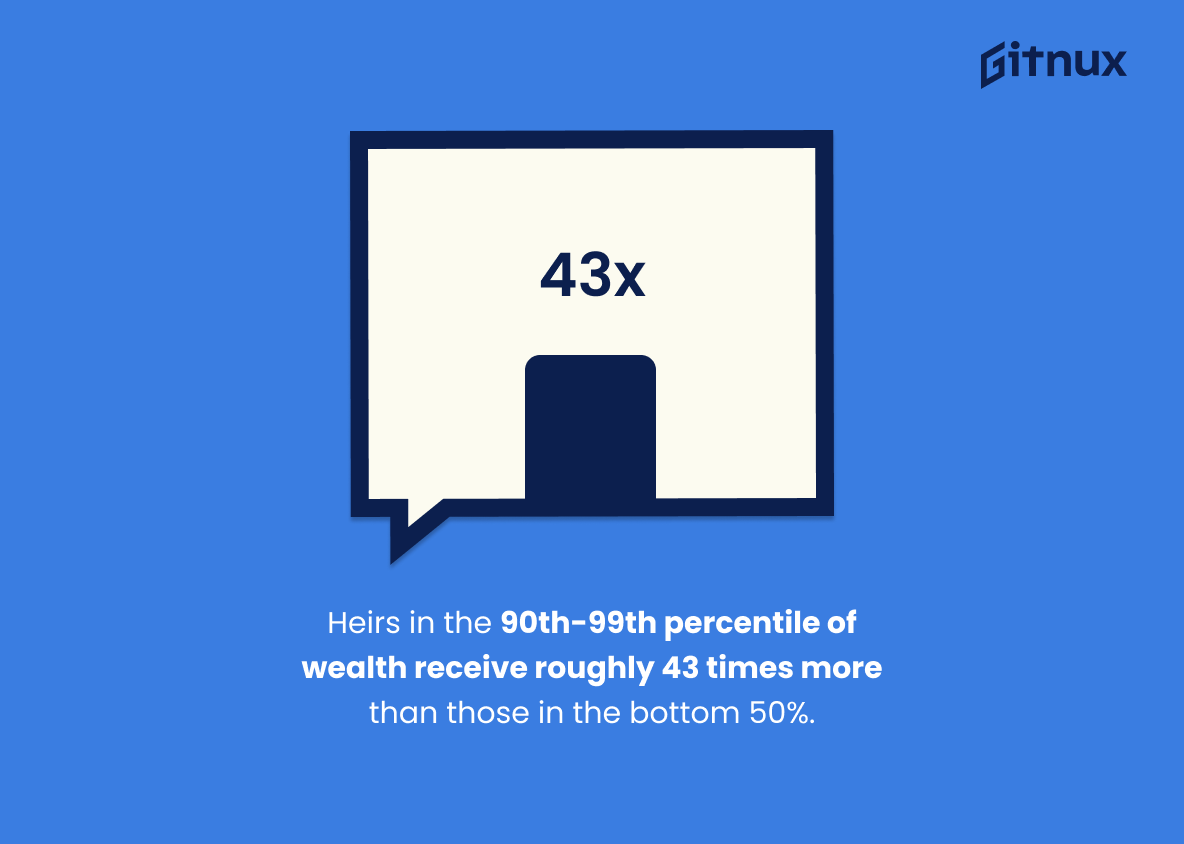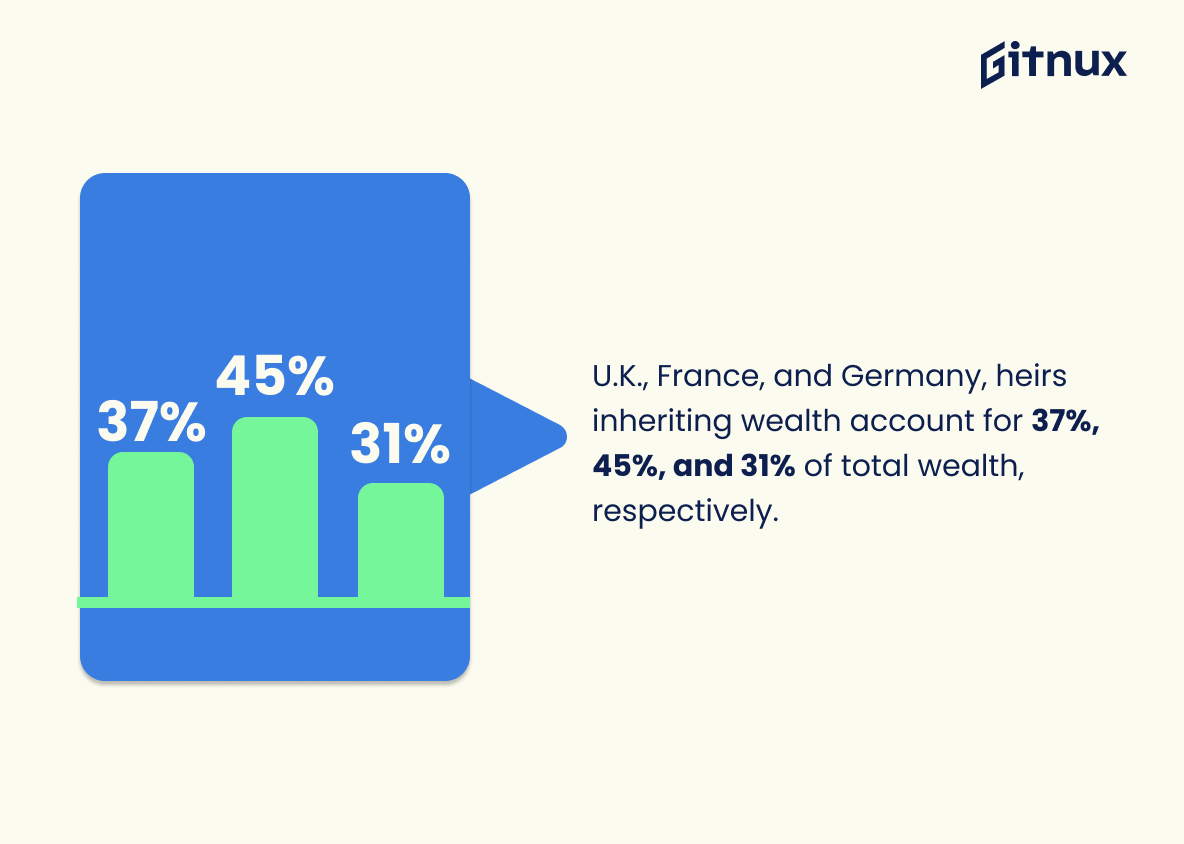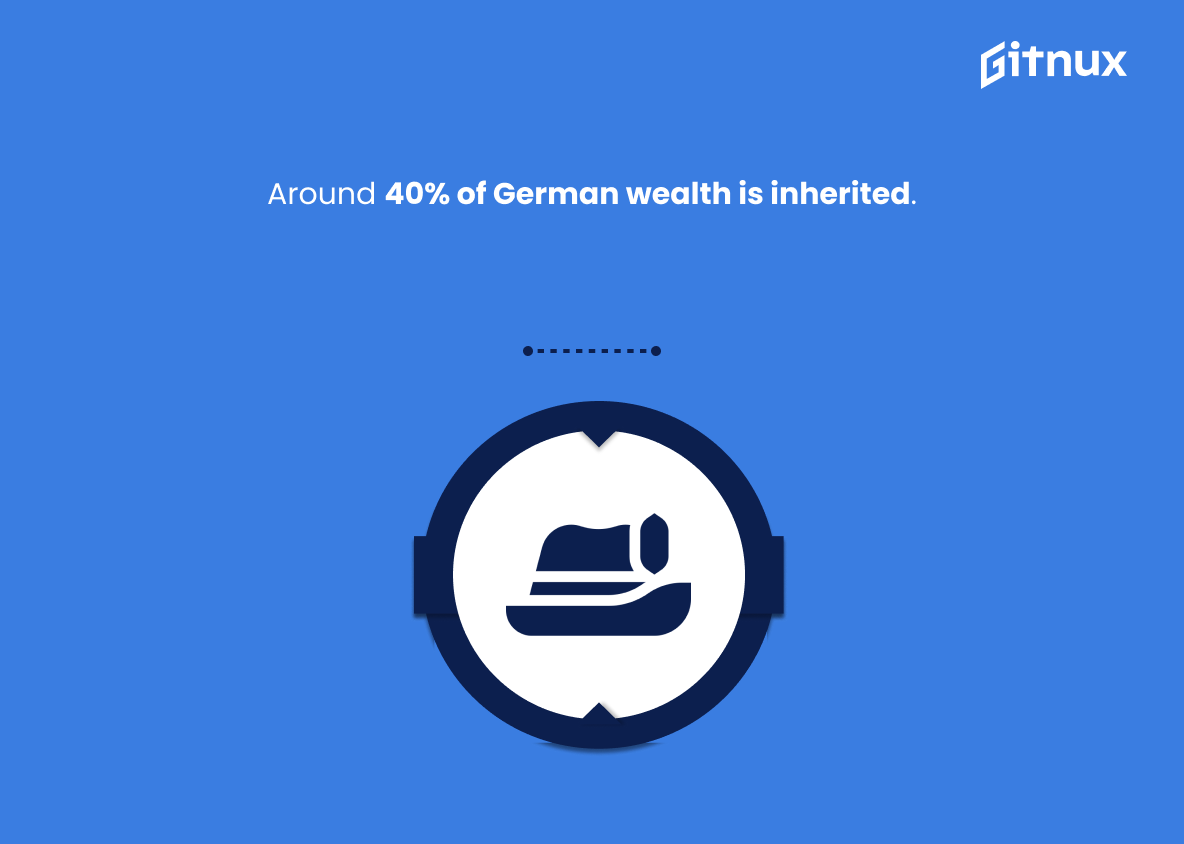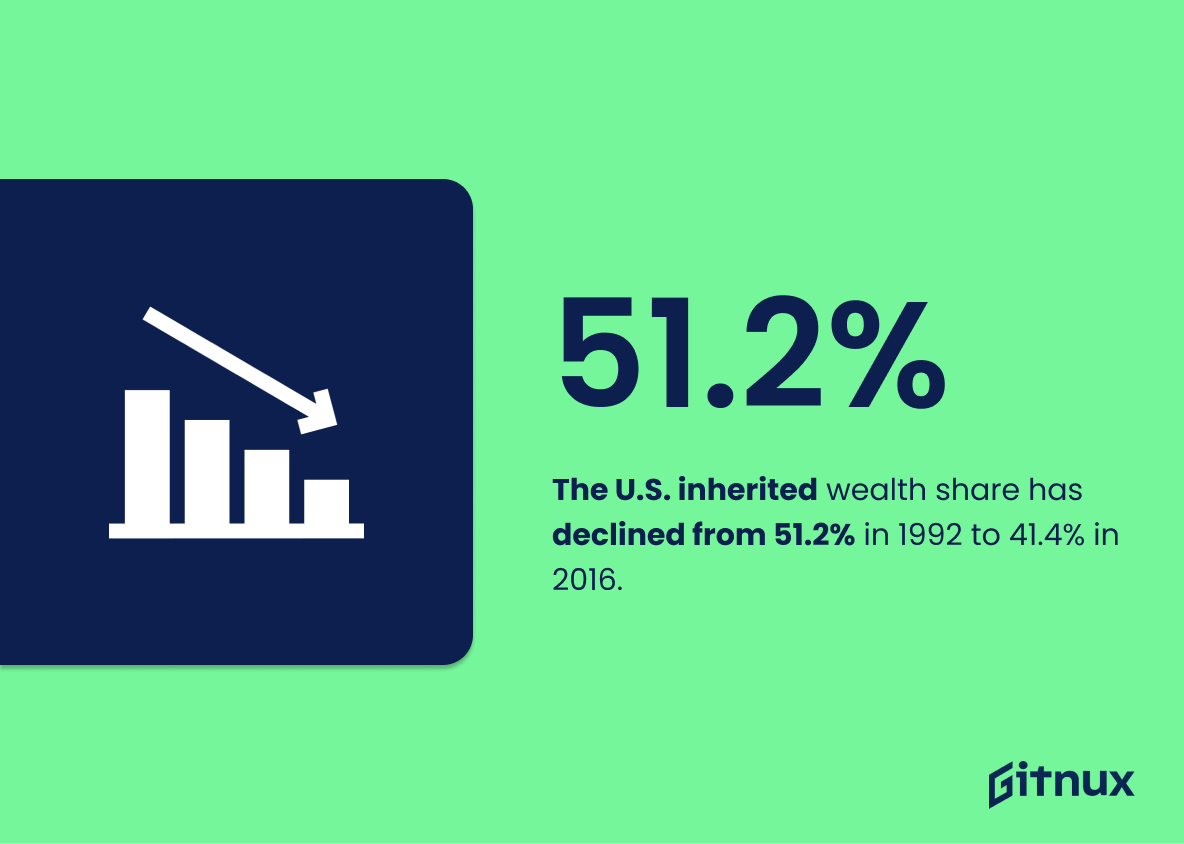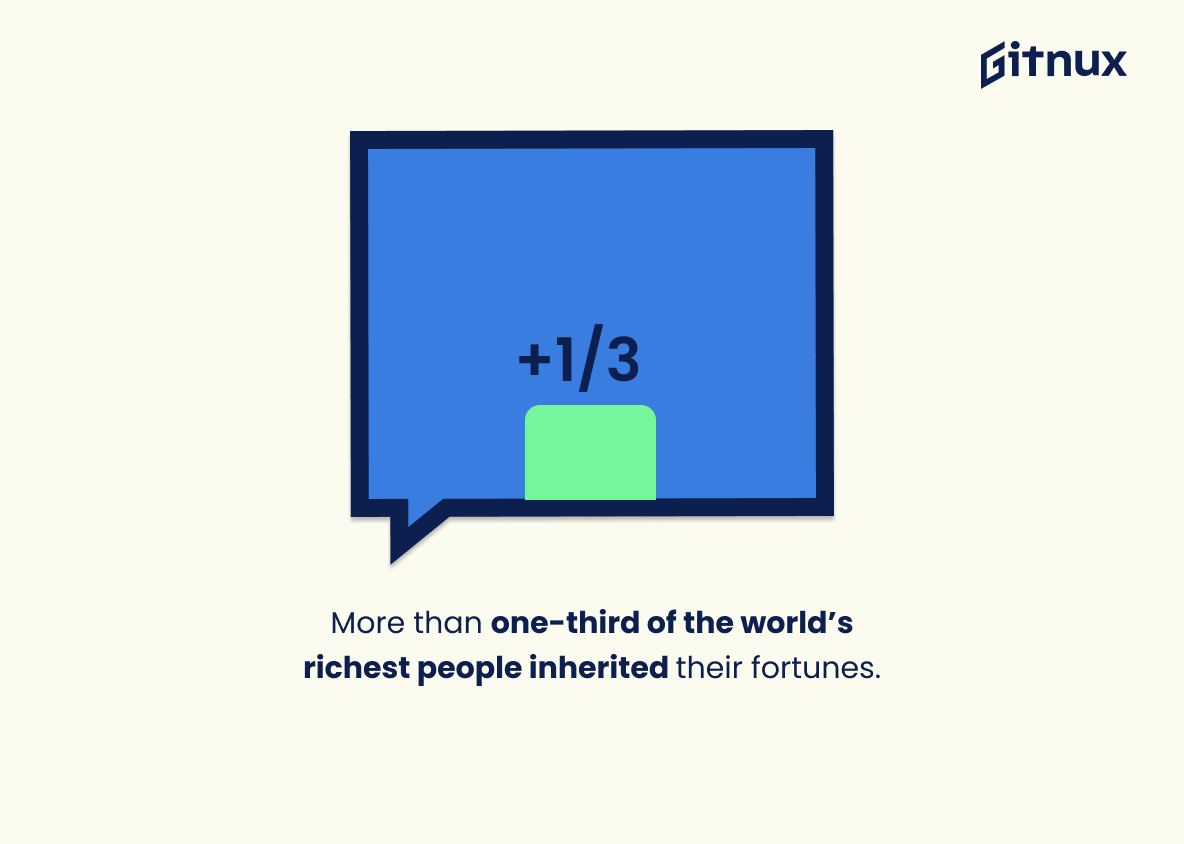Wealth inequality is a major issue in many countries around the world. Inherited wealth plays an important role in this, with statistics showing that it contributes significantly to overall wealth distribution and economic growth. This blog post will explore some of these inherited wealth statistics from various sources, including the United States, Europe, and other advanced economies.
Approximately 60% of America’s total wealth is inherited according to The Economist (https://www.economist.com/united-states/2014/10/25/for-richer-for-poorer). Only 20% of millionaires have acquired their fortunes through inheritance while 67% of billionaires are heirs to their family’s fortune as reported by Roosevelt Institute (https://rooseveltinstitute.org/five-facts-wealth-inequality-financialization-and
This statistic is a stark reminder of the immense power of inherited wealth in America. It highlights the fact that a large portion of the nation’s wealth is concentrated in the hands of a few, and that the majority of Americans are not able to benefit from this privilege. This statistic is a powerful illustration of the need for greater economic equality in the United States.
The average inheritance given to beneficiaries in 2020 was $358,546 in the U.S.
This statistic is a telling indication of the amount of wealth that is being passed down from one generation to the next. It provides a snapshot of the current state of inherited wealth in the United States, and can be used to compare the amount of wealth that is being inherited from one year to the next. This statistic is an important piece of information for anyone interested in understanding the dynamics of inherited wealth in the United States.
Inherited Wealth Statistics Overview
Inheritance taxes contribute 0.5% of total tax revenues in OECD countries.
This statistic serves as a stark reminder of the importance of inheritance taxes in the overall taxation system of OECD countries. It highlights the fact that, despite the relatively small percentage of total tax revenues, inheritance taxes are still a significant source of income for governments. This is especially pertinent in the context of inherited wealth statistics, as it demonstrates the need for governments to ensure that inheritance taxes are properly enforced in order to ensure that the wealth of the deceased is fairly distributed.
Heirs in the 90th-99th percentile of wealth receive roughly 43 times more than those in the bottom 50%.
This statistic is a stark reminder of the immense wealth gap between the top and bottom earners in society. It highlights the fact that those in the upper echelons of wealth are receiving a disproportionately large share of the wealth, while those in the bottom 50% are receiving a disproportionately small share. This inequality has far-reaching implications for economic mobility and social justice, and is a key factor in understanding the current state of inherited wealth.
About 1.7 million heirs receive an inheritance in the EU each year, representing a transfer of about 1.4% of total GDP.
This statistic is a powerful indicator of the prevalence of inherited wealth in the EU. It shows that a significant portion of the total GDP is being transferred from one generation to the next, highlighting the importance of inherited wealth in the region. This statistic is a reminder that inherited wealth is a major factor in the economic landscape of the EU, and that it should not be overlooked when considering the economic health of the region.
Heirs receiving an inheritance in the U.K., France, and Germany represent 37%, 45%, and 31% of the wealth, respectively.
This statistic is a telling indication of the disparities in inherited wealth between the U.K., France, and Germany. It highlights the fact that the U.K. has a higher proportion of wealth being passed down to heirs than either France or Germany, suggesting that the U.K. has a more entrenched system of inherited wealth. This is an important point to consider when discussing the implications of inherited wealth on economic inequality.
The top 10% of households in America hold 76% of all family wealth.
This statistic is a stark reminder of the vast inequality in wealth distribution in America. It highlights the fact that the majority of family wealth is concentrated in the hands of a small minority of households, leaving the rest of the population with a much smaller share of the pie. This has significant implications for the economic security of those who are not part of the top 10%, and serves as a reminder of the importance of addressing the issue of inherited wealth.
In the U.S., 50% of small businesses have part of their ownership that was inherited.
This statistic is a telling indication of the prevalence of inherited wealth in the U.S. It speaks to the fact that a significant portion of small businesses are owned by individuals who have inherited their wealth, rather than having earned it through their own hard work and dedication. This statistic is a powerful reminder of the importance of inheritance in the U.S. economy and the need to ensure that everyone has an equal opportunity to succeed.
Individuals with inherited wealth are more likely to become entrepreneurs.
This statistic is a powerful reminder that inherited wealth can be a powerful tool for those looking to become entrepreneurs. It highlights the fact that having access to financial resources can be a major factor in the success of a business venture. By understanding this statistic, readers can gain insight into the potential advantages of having inherited wealth and how it can be used to help them achieve their entrepreneurial goals.
Inherited wealth in the U.S. is growing at a faster rate than the overall economy.
This statistic is a stark reminder of the widening gap between the wealthy and the rest of the population. It highlights the fact that inherited wealth is becoming increasingly concentrated in the hands of a few, while the majority of the population is struggling to keep up with the overall economy. This is a concerning trend that should be addressed in order to ensure a more equitable distribution of wealth and resources.
Inheritance tax exemption threshold is currently $11.7 million per individual in the United States.
This statistic is a crucial piece of information when discussing Inherited Wealth Statistics, as it provides a clear indication of the amount of wealth that can be passed on without incurring any inheritance tax. It is a key factor in determining the amount of wealth that is transferred between generations, and thus has a direct impact on the overall wealth distribution in the United States.
Around 40% of German wealth is inherited.
This statistic is a stark reminder of the reality that inherited wealth plays a major role in the German economy. It highlights the fact that a large portion of the population has access to resources that are not available to those who have not been born into wealth. This statistic is a powerful indicator of the inequality that exists in Germany and serves as a call to action for those who are looking to create a more equitable society.
The U.S. inherited wealth share has declined from 51.2% in 1992 to 41.4% in 2016.
This statistic is a telling indication of the changing landscape of inherited wealth in the United States. It shows that the share of inherited wealth has decreased significantly over the past two decades, suggesting that the traditional notion of inherited wealth is becoming less and less relevant. This is an important point to consider when discussing the current state of inherited wealth in the United States.
More than one-third of the world’s richest people inherited their fortunes.
This statistic is a stark reminder of the power of inherited wealth and the inequality it can create. It highlights the fact that a large portion of the world’s wealthiest individuals have not earned their wealth through hard work and dedication, but rather have been handed it down from previous generations. This has implications for social mobility and economic opportunity, as those without access to inherited wealth may find it difficult to break into the upper echelons of society.
In Europe, between 30% and 50% of family businesses reach the third generation, illustrating the challenges of managing inherited wealth.
This statistic serves as a stark reminder of the difficulties associated with managing inherited wealth. It highlights the fact that only a small fraction of family businesses are able to survive and thrive through multiple generations, demonstrating the need for careful planning and management of inherited wealth.
Conclusion
The statistics presented in this blog post demonstrate the prevalence of inherited wealth across many countries, including the United States, Germany and other European nations. Approximately 60% of America’s wealth is inherited while only 20% of millionaires have acquired their fortunes through inheritance. In addition, around 67% of billionaires are heirs to a fortune and 5-10% of all bequests enter into the top 1%. The average inheritance given to beneficiaries in 2020 was $358,546 in the U.S., with an exemption threshold currently set at $11.7 million per individual for estate taxes that contribute 0.5 percent total tax revenues on average among OECD countries. Heirs receiving inheritances represent 37%, 45%, and 31 % respectively for those living within France, Germany or UK; however they receive 43 times more than those who fall within bottom 50th percentile when it comes to overall wealth distribution amongst families worldwide – where 76 percent belongs solely to 10th percentile households alone.
Inherited wealth also has implications beyond just financial gain as individuals with access tend to become entrepreneurs more often than not (1/3rd world’s richest people) but managing such assets can prove difficult over time due its declining share from 51-41 percent between 1992-2016 period along with 30%-50% family businesses reaching 3rd generation mark throughout Europe – illustrating challenges associated therein.
References
0. – https://www.www.dw.com
1. – https://www.www.economist.com
2. – https://www.advocacy.sba.gov
3. – https://www.www.irs.gov
4. – https://www.www.ncbi.nlm.nih.gov
5. – https://www.policytensor.com
6. – https://www.www.cnbc.com
7. – https://www.inequality.org
8. – https://www.www.familybusinessunited.com
9. – https://www.www.aarp.org
10. – https://www.www.businessinsider.com
11. – https://www.www.brookings.edu
12. – https://www.www.oecd.org
13. – https://www.voxeu.org
